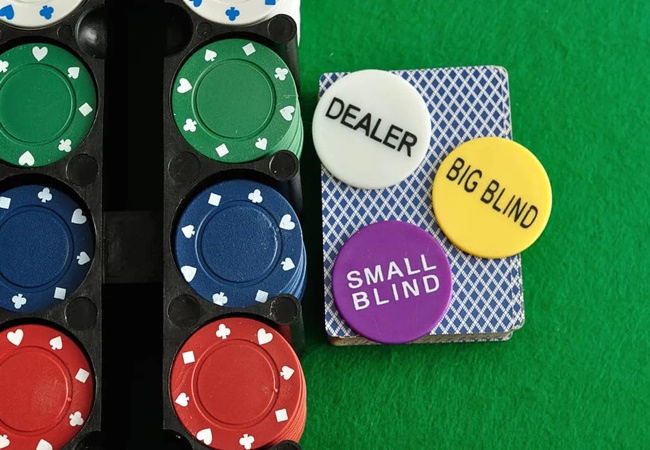
Teen Patti, often referred to as Indian Poker, is a popular card game in South Asia, particularly in India. The game, which translates to “three cards” in English, is known for its simplicity and engaging nature. Among the various ways to play Teen Patti game, the “blind ante” game is one of the most intriguing variations. This version adds a layer of suspense and strategy, making it a favorite among enthusiasts. This article delves into the intricacies of the blind ante game in Teen Patti, exploring its rules, strategies, and the excitement it brings to the table.
Understanding the Basics of Teen Patti
Before diving into the blind ante variation, it’s essential to understand the fundamental mechanics of Teen Patti. The game is typically played with a standard 52-card deck, excluding jokers. Each player is dealt three cards face down, and the objective is to have the best three-card hand, ranked similarly to poker hands.
The hand rankings from highest to lowest are:
- Trail (Three of a Kind): Three cards of the same rank.
- Pure Sequence (Straight Flush): Three consecutive cards of the same suit.
- Sequence (Straight): Three consecutive cards not all in the same suit.
- Color (Flush): Three cards of the same suit not in sequence.
- Pair (Two of a Kind): Two cards of the same rank.
- High Card: If none of the above, the highest card wins.
Ante and Betting Rounds
In Teen Patti, each game begins with players placing an initial bet called the “ante.” This ante is a mandatory bet that all players must place to participate in the round. After the ante, the game proceeds with betting rounds where players can choose to play either “blind” or “seen.”
- Blind Players: Players who choose to play blind do not look at their cards. They place bets based on intuition and strategic guessing.
- Seen Players: Players who have looked at their cards before placing bets.
The decision to play blind or seen significantly impacts the dynamics of the game, especially in the blind ante variation.
The Blind Ante Game
The blind ante game is a specific format within Teen Patti where the emphasis is on blind betting. Here’s how it differs from the regular version:
- Compulsory Blind Ante: In this variation, the initial ante is not just a minimum bet but a compulsory blind bet. All players must place this bet without looking at their cards. This rule sets the stage for a game full of surprises and strategic bluffs.
- Betting Multipliers: When betting blind, players’ bets are typically required to be at least twice the current stake. For instance, if the stake is set at 10 chips, a blind player’s minimum bet would be 20 chips. Seen players, on the other hand, can bet the current stake or higher.
- Showdown Criteria: The blind ante game often has specific rules for reaching a showdown, the final phase where players reveal their cards to determine the winner. For example, a showdown might be triggered when a blind player challenges a seen player, or after a set number of betting rounds.
Strategy in the Blind Ante Game
The blind ante game in Teen Patti demands a blend of intuition, psychological acuity, and strategic thinking. Here are some strategic insights:
- Bluffing: Playing blind opens up a vast arena for bluffing. Since no one knows their cards, players can bet aggressively to project confidence. However, successful bluffing requires reading opponents and gauging their reactions to bets.
- Reading Opponents: Observing opponents’ behavior is crucial. Players often reveal subtle cues about their confidence level or potential hand strength through their betting patterns and body language.
- Controlled Aggression: Since blind players must bet higher amounts, it’s essential to balance aggression with caution. Over-betting can lead to significant losses if done recklessly.
- Switching Tactics: Alternating between blind and seen play can confuse opponents and prevent them from predicting your strategy. This unpredictability can be a powerful tool.
- Patience: Patience is a virtue in the blind ante game. Knowing when to fold and when to bet aggressively can make the difference between winning and losing.
The Thrill of the Blind Ante Game
The blind ante game introduces a heightened level of excitement to Teen Patti. The compulsory blind bets create an atmosphere of unpredictability and suspense. Players are often on the edge of their seats, making decisions without knowing the true strength of their hands. This uncertainty fosters a unique psychological battle where reading opponents and bluffing become paramount.
Moreover, the blind ante game emphasizes the social aspect of Teen Patti. The interactions, bluffs, and strategic plays lead to lively and engaging gaming sessions. Players experience a rollercoaster of emotions, from the thrill of a successful bluff to the tension of a high-stakes showdown.
Variations and Regional Differences
While the core rules of the blind ante game remain consistent, regional variations can add different flavors to the gameplay. Some regions might have specific rules about how many rounds of betting occur before a showdown or different multipliers for blind bets. Exploring these regional nuances can offer a richer understanding and appreciation of the game.
Conclusion
The blind ante game in Teen Patti is a captivating variation that enriches the traditional card game with new layers of strategy and excitement. By compelling players to bet without seeing their cards, it introduces a dynamic blend of luck and skill. Whether you’re a seasoned Teen Patti player or a newcomer, the blind ante game offers a thrilling and engaging experience that highlights the best aspects of this beloved card game. Whether played casually among friends or in competitive settings, it remains a testament to the enduring appeal of Teen Patti in South Asian culture.